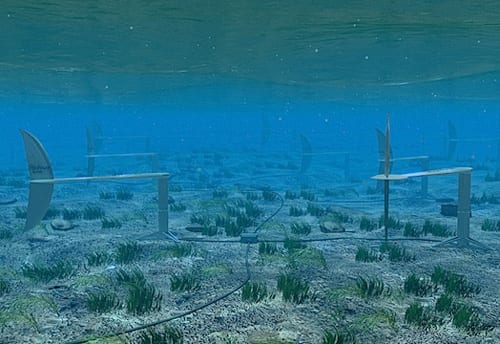Within the various types of renewable energy, those that have the sea as their primary source are the most efficient. This statement stems from the fact that by not having "shadows" in the oceans, resources such as air, for example, can be fully exploited. In other words, there are no barriers and the air can be fully used in the case of wind power turbines, which with their immense blades collects the wind more slowly and converts it into energy in a higher percentage.
Offshore wind
Undoubtedly, offshore wind has become the most recurrent of its type, already at the end of 2009 it had an installed power of 2 thousand 63 Mw and although there are leaders in the sector such as Denmark and the United Kingdom, countries such as China are committed to increasing their power, and developing more research, development and innovative engineering that allows maximum exploitation of the offshore wind farms by developing wind turbines that can operate efficiently from the sea.
Wave energy
But in the sea it is a source of several resources, in this sense the energy generated by the waves (Energy wave motor) can also be transformed into electricity.
Although it is less developed, it has experimental technologies:
- Structures anchored on the coast or on the seabed (first generation).
- Offshore structures with floating elements or on the bottom in surface waters (second generation).
- Offshore structures, in deep waters with a limit of 100 meters, with floating or sunken collector elements (third generation).
- In the Basque Country a project is being developed with a technology called Oscillating Water Column in which the movement of the waves produces pressure on a volume of air contained in a semi-submerged column, with enough force for that air to flow and operate a turbine.
- Other devices are absorbers or attenuators, which take advantage of the movement of the waves to produce mechanical energy that is converted into electricity.
- Other technologies are based on overflow systems and terminators.
Tidal energy
It is about taking advantage of the rise and fall of the sea that the tides produce. The principle is that a water tank is filled at high tide and empties at low tide, when the water level between the sea and the tank reaches a certain level, the water is passed through a turbine that produces electrical energy. In France (La Rance) there is such a facility.
The system has its disadvantages: the height of the waves must exceed 5 meters, which is a limitation because this condition is met only in certain places. The second disadvantage is its environmental impact high since these conditions occur in locations of important marine ecosystems.
Oceanic thermal gradient
It is the temperature difference between the sea surface and the deep waters, whose temperature difference must be greater than 20º C (equatorial and subtropical regions).
It is a technology that is just beginning in countries like India, Japan and Hawaii.
Osmotic pressure
It refers to the use of the pressure difference between fresh water from rivers and salty water from the sea. The Norwegian holding company Statkraft develops a project in the Oslo fjord with these principles.
Saline grading
It is based on the difference between the salt content between river water and sea water. When these waters mix, energy is produced that could be transformed into electricity.
The sea offers a lot of energy potential but the technologies to take advantage of them are still in the experimentation phase, with the exception of offshore wind, which is already competitive.
The main obstacle to marine energies is the high cost of its exploitation, this has slowed its development compared to other renewable energy.

Thanks for the info